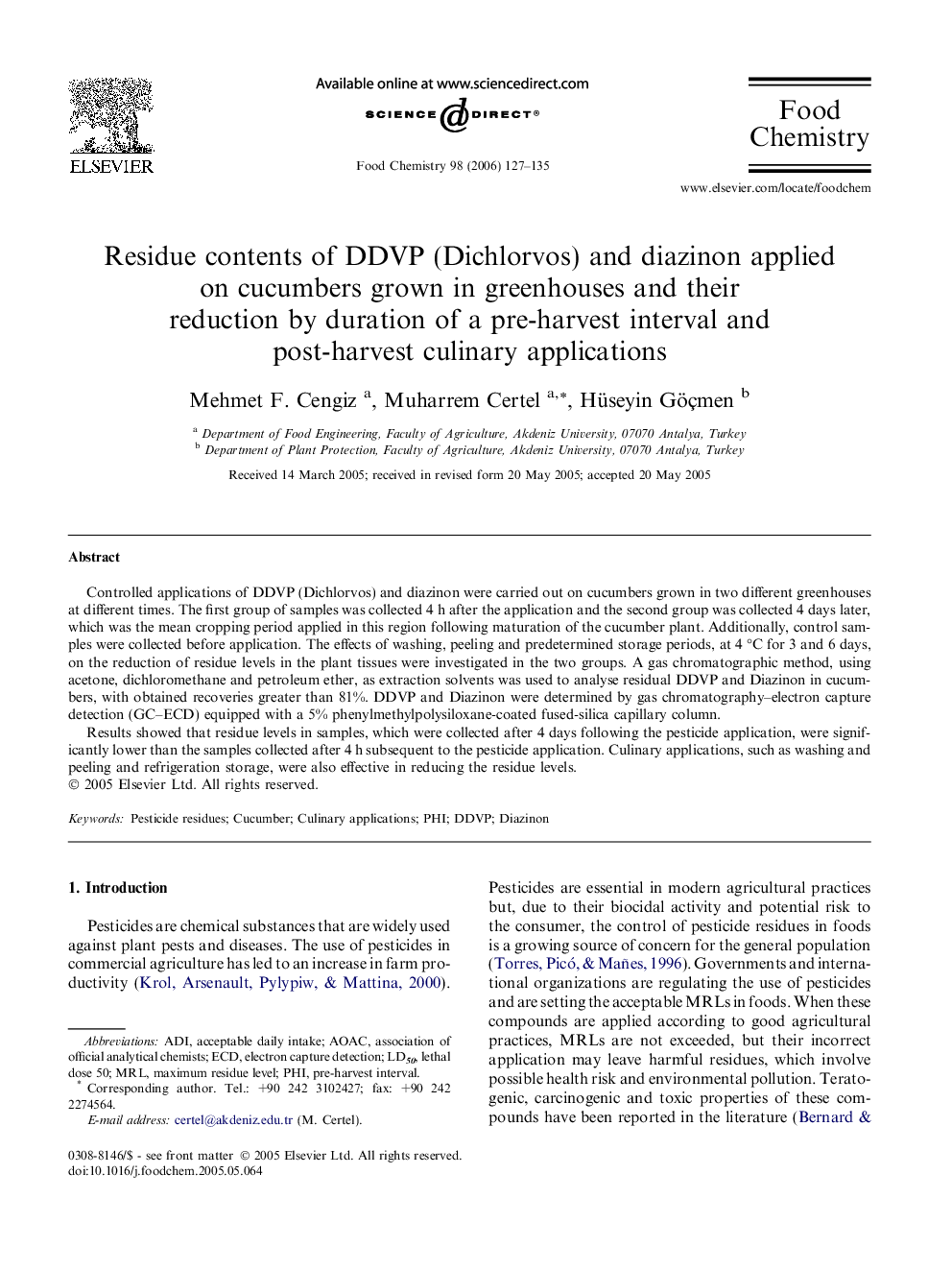| Article ID | Journal | Published Year | Pages | File Type |
|---|---|---|---|---|
| 1191205 | Food Chemistry | 2006 | 9 Pages |
Controlled applications of DDVP (Dichlorvos) and diazinon were carried out on cucumbers grown in two different greenhouses at different times. The first group of samples was collected 4 h after the application and the second group was collected 4 days later, which was the mean cropping period applied in this region following maturation of the cucumber plant. Additionally, control samples were collected before application. The effects of washing, peeling and predetermined storage periods, at 4 °C for 3 and 6 days, on the reduction of residue levels in the plant tissues were investigated in the two groups. A gas chromatographic method, using acetone, dichloromethane and petroleum ether, as extraction solvents was used to analyse residual DDVP and Diazinon in cucumbers, with obtained recoveries greater than 81%. DDVP and Diazinon were determined by gas chromatography–electron capture detection (GC–ECD) equipped with a 5% phenylmethylpolysiloxane-coated fused-silica capillary column.Results showed that residue levels in samples, which were collected after 4 days following the pesticide application, were significantly lower than the samples collected after 4 h subsequent to the pesticide application. Culinary applications, such as washing and peeling and refrigeration storage, were also effective in reducing the residue levels.
